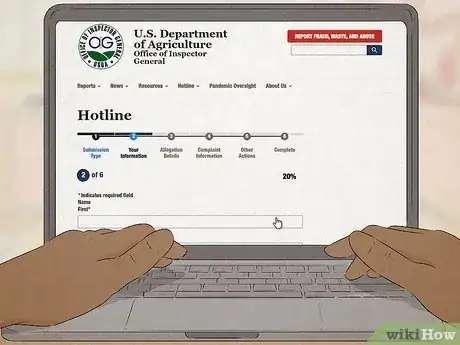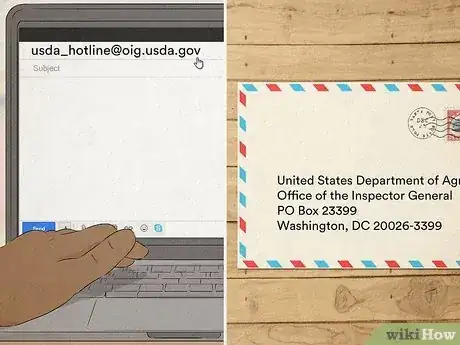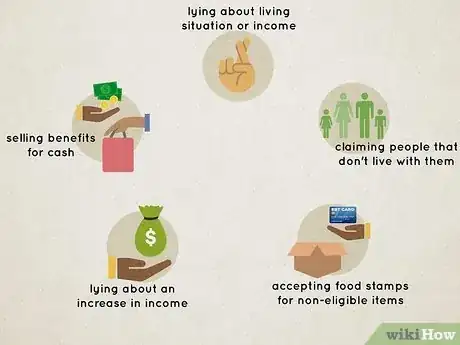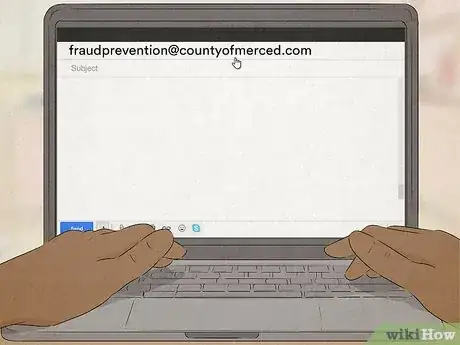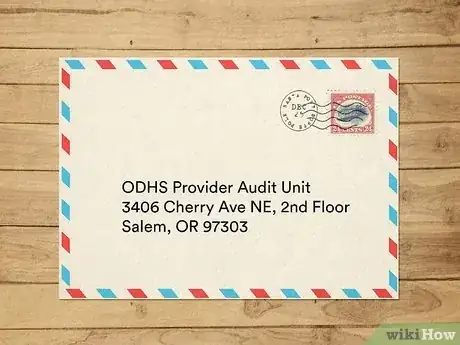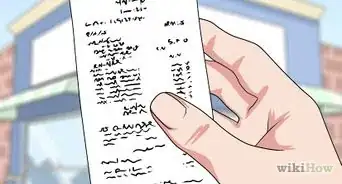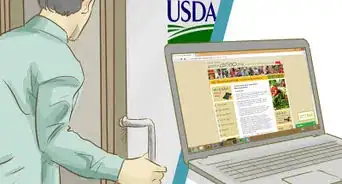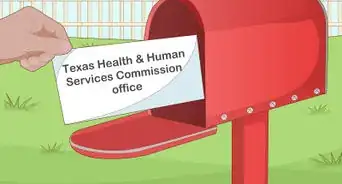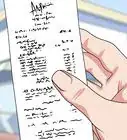This article was co-authored by Jennifer Mueller, JD and by wikiHow staff writer, Jessica Gibson. Jennifer Mueller is an in-house legal expert at wikiHow. Jennifer reviews, fact-checks, and evaluates wikiHow's legal content to ensure thoroughness and accuracy. She received her JD from Indiana University Maurer School of Law in 2006.
There are 8 references cited in this article, which can be found at the bottom of the page.
This article has been viewed 67,776 times.
Food Stamps are a lifeline for more than 41 million struggling Americans. If you suspect that someone's taking advantage of the program for personal gain, it's a good idea to file a fraud report. If you're reporting a vendor or institution of food stamp fraud, go straight to the USDA's hotline—they follow up with every anonymous report. To report individuals, reach out to your state's food stamp program, so they can investigate. By reporting food stamp fraud, you can help ensure the program is available for those who need it most.
Steps
Contacting the USDA (Best for Reporting Vendors)
-
1Gather evidence of fraud to report. You'll need the names and addresses of the people involved. Plus, you'll have to give a detailed description of the activity that you think is fraudulent. Because it's a large government agency, the USDA prioritizes large cases of food stamp fraud featuring vendor or retail fraud, although it will investigate individual acts of fraud.
- Retailers may be guilty of fraud if employees knowingly buy SNAP benefits for cash, or if they sell food in exchange for SNAP benefits that are ineligible for the program.[1]
- An example of individual food stamp fraud would be if someone exchanges cash for a customer's EBT card.
-
2Go to the USDA's online hotline and fill out their form. If you don't want the person or company you reported to know that you reported them, choose confidentiality (there will be an option to select this on the form). Then, give contact information for the person or vendor you're reporting and describe the fraudulent activity. The form will ask if you've reported the issue to any other organizations or agencies before you hit "submit."[2]
- Confidentiality allows the USDA to contact you if the investigators need more information to act on your report.
Advertisement -
3Call the USDA if you don't want to use the online hotline. If you prefer to talk to someone on the phone, call the USDA's Office of the Inspector General (OIG). Keep in mind that even if you give your personal information to the person you talk to, your report is confidential. Call the USDA at any of these numbers:[3]
- (800) 424-9121
- (202) 690-1622
- (202) 690-1202 (TDD)
-
4Mail or email the information to the USDA as an alternative option. The OIG also accepts fraud reports by email to usda_hotline@oig.usda.gov, or you can write out the details of your report and mail it to United States Department of Agriculture Office of the Inspector General, PO Box 23399, Washington, DC 20026-3399.[4]
- If you'd like to remain anonymous, indicate that in your letter.
Contacting Your State (Best for Individuals)
-
1Gather and record your evidence of fraudulent activity. State welfare agencies typically have an investigations unit that's responsible for handling fraud, so this is the best way to report individuals that you're sure are committing food stamp fraud. You'll have to give details about the person and activity that you think is fraudulent. You'll also have to file the report in the state where the person lives. Here are a few examples of what constitutes food stamp fraud:[5]
- Someone sells their benefits for cash.
- A person lied about their living situation or income on their application.
- Someone claimed people that don't live with them on their application.
- A person wasn't truthful about their income or didn't notify the agency about an increase in income.
- A vendor commits fraud if they accept food stamps for non-eligible items.
-
2Call your state's food stamp (SNAP) office. For a list of customer service numbers by state, visit the USDA website. When you call your state's toll-free number, they'll ask if you'd like to remain anonymous. Then, give the representative the fraud information they ask for.[6]
- If you prefer, you might have the option of writing down and faxing the information to the state.
-
3Email your state's welfare agency if they don't have an online hotline. While every state has a phone number you can call to report food stamp fraud, only some provide email addresses. Put all the information about the individual and fraudulent activity in the body of your email and send it to the state agency.[7]
- Refer to the USDA's state contact list, which shows whether or not you can email your state.
-
4Fill out a form online if your state has a reporting website. When you pull up the state fraud directory, you might see websites listed next to some of the states. If you click on the hyperlink, it will take you directly to that state's hotline form.
- For example, if you click on Ohio's site, operated by the Department of Job and Family Resources, you can enter the individual's contact information, explain what fraud you've witnessed, and provide your contact information if you don't want to remain anonymous.[8]
- You'll see blank spaces for your contact information, but if there's not an asterisk (*) next to them, you aren't required to fill them out unless you want to.
-
5Write to your state’s investigation unit if they provide an address. Although it's not as common, some states allow you to write out your report and mail it to them. If this is the case, you'll see the address listed on your state's welfare website. If you want to remain anonymous, it's important to include all the information you collected (including the person's contact information and a detailed description of the fraud). This is because the agency won't be able to reach out for more information!
- Usually, you'll be advised to mail your report to the state's investigations unit. This is often a P.O. box at the state capital.[9]
-
6Respond to your state's request for more information. If you didn't file your report anonymously, the investigators may have follow-up questions for you as they evaluate your report. Depending on what contact information you provided, they may email or call you. Be as helpful and cooperative as possible, so they have all the information they need to make a decision about the case.
- Because fraud is a criminal offense, you won't be informed about the results of the investigation.[10]
Warnings
- Food stamp fraud is a crime. Retailers found guilty of fraud may be disqualified from further participation in the program, and may pay up to a $10,000 fine and 5 years in prison. Individuals may also be disqualified from receiving SNAP benefits, and may have to repay benefits they received illegally.[11]⧼thumbs_response⧽
References
- ↑ http://www.fns.usda.gov/fraud/how-can-i-fight-snap-fraud
- ↑ https://usdaoig.oversight.gov/hotline
- ↑ https://www.fns.usda.gov/snap/integrity/fraud-reporting
- ↑ http://www.fns.usda.gov/fraud/how-can-i-report-snap-fraud
- ↑ http://www.fns.usda.gov/fraud/how-can-i-fight-snap-fraud
- ↑ https://www.fns.usda.gov/snap/integrity/fraud-reporting-by-state
- ↑ https://www.fns.usda.gov/snap/integrity/fraud-reporting-by-state
- ↑ https://secure.jfs.ohio.gov/Feedback/fraud/foodAssistRecipient.stm
- ↑ https://www.oregon.gov/dhs/abuse/pages/fraud-reporting.aspx
About This Article
If you’re aware of someone committing food stamp fraud, you can report them to your state’s agency. It’s fraud if they’re selling their benefits for cash or letting someone else use their card for themselves. Only report someone if you’re sure they’re committing fraud and you have details like their name and when and where they committed fraud. Report them to the agency responsible for SNAP benefits in your state. You can either fill out a form on their website or call them directly. You should be able to remain anonymous if you’re worried about the person finding out. For more tips from our Legal co-author, including how to report a company for food stamp fraud, read on!

